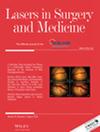Sub-diffuse Reflectance Spectroscopy Combined With Machine Learning Method for Oral Mucosal Disease Identification
Abstract
Objectives
Oral squamous cell carcinoma (OSCC) is the sixth-highest incidence of malignant tumors worldwide. However, early diagnosis is complex owing to the impracticality of biopsying every potentially premalignant intraoral lesion. Here, we present a sub-diffuse reflectance spectroscopy combined with a machine learning method for oral mucosal disease identification. This method provides a noninvasive cost-effective identification option for early signs of malignancy.
Methods
Sub-diffuse spectra of three oral sites (hypoglottis, buccal, and gingiva) from healthy subjects and three types of mucosal lesions (oral lichen planus, OLP, oral leukoplakia, OLK, and OSCC) from patients were collected by using a home-made sub-diffuse reflectance spectroscopy prototype system, and three features including spectra ratio (SR), first-order derivative(DE) of the spectra and optical parameters (OP) were derived from the original spectra to enhance the insights into the optical properties of the oral mucosal tissues. To accurately classify the spectral features, a support vector machine (SVM) and probabilistic neural network (PNN) were employed.
Result
Most of the statistical distributions of the spectral features demonstrated obvious differences and the two classification methods exhibited comparable performances. For the classification in the oral sites of healthy subjects, the OP-based classification results were unsatisfactory, while the classification results utilizing DR, SR, and DE achieved a least accuracy of 0.8289, sensitivity of 0.8495, sensitivity of 0.9311, and Matthews correlation coefficient of 0.8085. Comparatively, the classification results between OLP, OLK, OSCC, and normal tissue obtained achieved high indexes even using the OP feature.
Conclusion
Integrating sub-diffuse reflectance spectroscopy measurement and suitable machine learning methods can obtain remarkable precision in differentiating different sites of oral mucosa and identifying different types of oral mucosal diseases, especially based on DE features. It is of great help in detecting OSCC and is expected to be a highly sensitive, time-sensitive, and accurate method for oral disease detection.

 求助内容:
求助内容: 应助结果提醒方式:
应助结果提醒方式:


